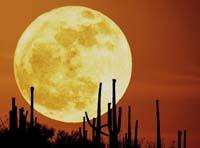The Moon, the curiosity of the universe

4.500 million years ago, a Mars size body hit the Earth and the Moon emerged from the fragments that were released. It is not usual for satellites to emerge from the fragments of the planets. In fact, of the 165 satellites found in our solar system, the Moon is the only satellite developed in this way. And scientists estimate that only 5% to 10% of planetary systems throughout the universe have some satellite born this way.
When the satellites emerge like this, the parts released by the shock remain like waste spinning around the planet. These parts add up and create the satellite. Scientists believe that if there were many of these satellites there would be clouds of debris around the planets and today they have not detected many of them. That is why they believe that satellites created as a result of shocks are a curiosity in the universe.
Buletina
Bidali zure helbide elektronikoa eta jaso asteroko buletina zure sarrera-ontzian











